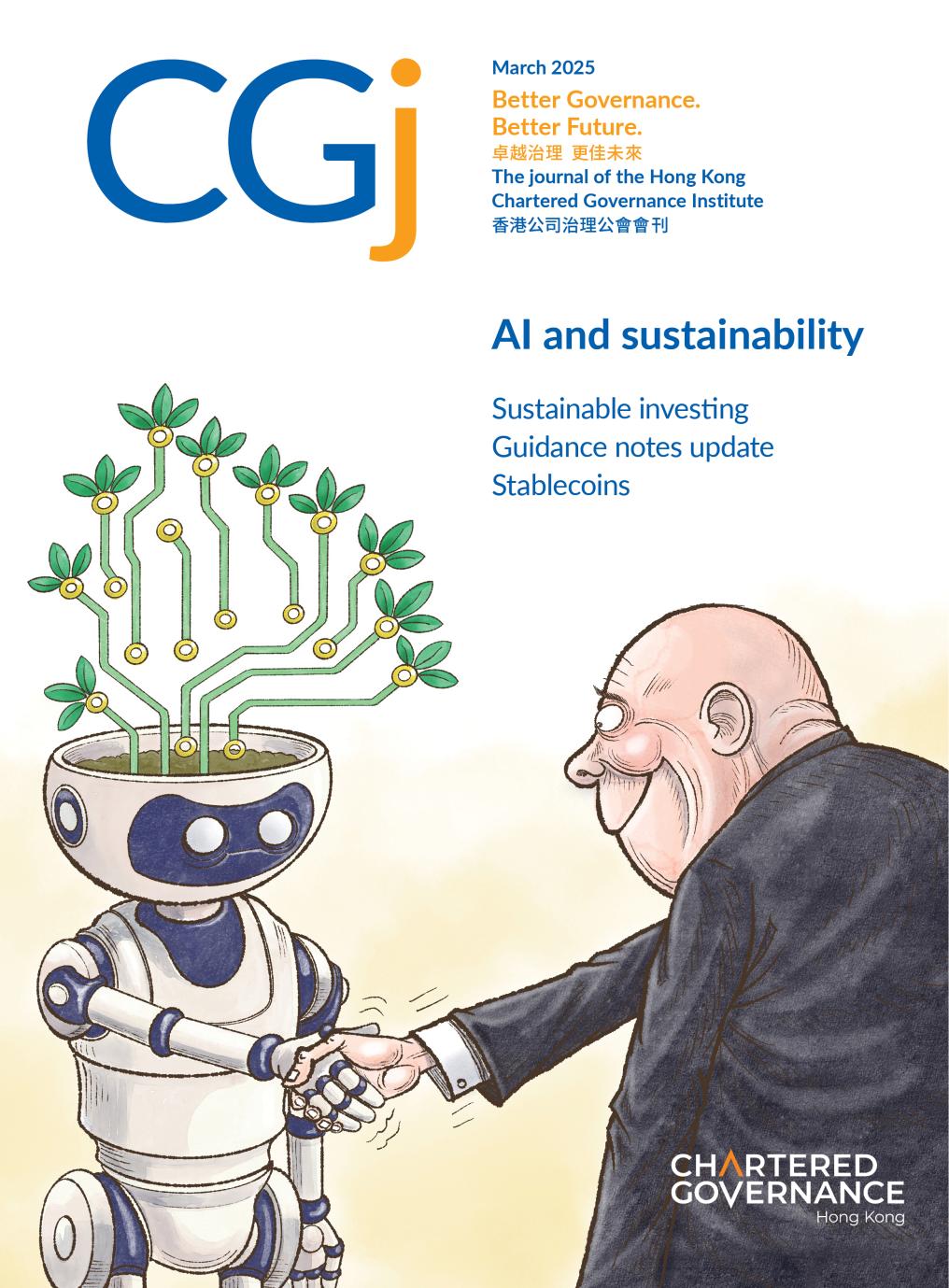
Hong Kong’s Stablecoins Bill
Regulatory regime for issuance and offers of stablecoins
Authors at King & Wood Mallesons provide an overview of Hong Kong’s recent Stablecoins Bill, which establishes a licensing and regulatory framework for stablecoin issuers to address concerns over financial stability and investor protection.
Highlights
- the proposed stablecoin regulatory regime mandates licensing for issuers of fiat-referenced stablecoins and imposes strict requirements on reserves, business activities and redemption mechanisms
- only certain regulated entities can offer or market Specified Stablecoins in Hong Kong, with restrictions for non-HKMA-licensed issuers
- the regime includes extraterritorial provisions and transitional arrangements
On 6 December 2024, the HKSAR Government published the highly anticipated Stablecoins Bill, which was introduced into the Legislative Council for first reading on 18 December 2024.
This follows after the Hong Kong Monetary Authority (HKMA) and the Financial Services and Treasury Bureau published the much-anticipated conclusions to their December 2023 consultation paper on the proposed regulatory regime for stablecoin issuers in Hong Kong.
The Stablecoins Bill sets out the licensing and regulatory regime for certain stablecoins (Specified Stablecoins), which are digital assets that purport to maintain a stable value relative to one or more official currencies, or which meet other specified requirements.
The regime is intended to address the monetary policy, financial stability and investor protection concerns associated with Specified Stablecoins, while encouraging the responsible development of the digital asset market in Hong Kong. It builds on other key regimes, including the licensing regime for digital asset exchanges that went live on 1 June 2023.
the regime is intended to address the monetary policy, financial stability and investor protection concerns associated with Specified Stablecoins, while encouraging the responsible development of the digital asset market in Hong Kong
In summary, the Stablecoins Bill contains three key components, as outlined below.
- Specified Stablecoin issuer licensing and requirements. Issuers of Specified Stablecoins in Hong Kong must obtain a licence from the HKMA and comply with comprehensive licensing requirements relating to, among other things, the issuer and its controller(s), its financial and other resources, the Specified Stablecoins it issues, the reserve assets and stabilisation mechanism supporting the Specified Stablecoins, and other requirements.
- Specified Stablecoin offering and marketing restrictions. Only certain regulated entities and platforms can offer Specified Stablecoins in Hong Kong or actively market them to the public of Hong Kong. Furthermore, only Specified Stablecoins that are issued by HKMA-licensed issuers can be offered to retail investors. Other Specified Stablecoins can only be offered if the offer falls within one of the available exemptions.
- Broader consumer protection, market integrity and other offences. These can affect a range of market participants – not just issuers and distributors.
The Stablecoins Bill includes extraterritorial provisions that will be relevant to many offshore issuers and platforms. Crucially, any Specified Stablecoin referencing Hong Kong dollars is in scope, irrespective of the location of the issuer, marking a notable expansion of typical Hong Kong regulatory jurisdictional triggers.
Key aspects of the stablecoin regime will be similar in many respects to the structure and approach to stored value facility (SVF) regulation in Hong Kong, and are generally consistent with the Basel Committee’s recently revised criteria for stablecoins to qualify as so-called ‘Group 1b cryptoassets’, which enjoy favourable regulatory capital treatment under the Basel cryptoasset standards, although they are narrower than the Financial Stability Board’s recommendations for ‘global stablecoin arrangements’.
Below is an overview of Hong Kong’s Stablecoins Bill.
Focus on fiat-referenced stablecoins
Hong Kong’s proposed stablecoin regulatory regime focuses on fiatreferenced stablecoins, as opposed to other types of stablecoins such as those referencing gold or other assets. The stablecoin regulatory regime adopts a risk-based approach to regulating stablecoin issuers and seeks to apply the ‘same activity, same risk, same regulation’ principle. Hong Kong authorities will be empowered to adjust the scope of application of the new regime as the digital asset market evolves. Importantly, the scope of the regime versus the licensing available (including related licensing conditions) may mean that certain stablecoins are effectively banned or significantly restricted.
To implement the proposed stablecoin regulatory regime, the government has introduced new legislation in the form of the Stablecoins Bill, which will be named the Stablecoins Ordinance once operational, instead of amending existing legislation such as the Payment Systems and Stored Value Facilities Ordinance (Cap 584) and the Anti–Money Laundering and Counter–Terrorist Financing Ordinance (Cap 615) (AMLO). We consider that this approach may assist in enabling the evolution of the regime over time.
Definition of a Specified Stablecoin
Under the Stablecoins Bill, a Specified Stablecoin essentially means a cryptographically secured digital representation of value that, among other features, purports to maintain a stable value with reference wholly to one or more fiat currencies or other HKMA-specified units of account or stores of economic value.
However, financial products and instruments that are already covered by existing regulatory regimes, such as deposits, securities (including authorised collective investment schemes and authorised structured products), futures contracts, float stored in SVFs and SVF deposits, as well as government or central bank issued digital assets (such as central bank digital currencies), will be excluded.
This is critical, as avoiding overlap will be an important part of the lawmaking process and there can be a particularly fine line between stablecoins and other existing instruments such as SVFs, structured products, collective investment schemes and debentures. In this respect, we note that many stablecoins are already regulated under existing Hong Kong laws.
Licensing triggers
The following persons (each having a Hong Kong nexus) must obtain a licence from the HKMA (unless a specific exemption is available) for carrying on a regulated stablecoin activity (ie the issuance of a Specified Stablecoin):
- any person that issues a Specified Stablecoin in Hong Kong
- any person that issues a Specified Stablecoin outside Hong Kong referencing the Hong Kong dollar
- any person that carries on, in respect of a Specified Stablecoin, an activity specified by the HKMA pursuant to Section 5(4) of the Stablecoins Bill, or
- any person that holds itself out as carrying on a regulated stablecoin activity, including a person that actively markets its issuance of a Specified Stablecoin to the public of Hong Kong (which includes a class of that public).
Licensing requirements
Key licensing conditions and requirements for licensees include the following:
- A licensee must be a Hong Kong incorporated company or an authorised institution (AI) incorporated outside Hong Kong with certain of its senior management and key personnel based in Hong Kong. It must also meet specified minimum criteria, including financial resources requirements.
- The licensee must have an effective stabilisation mechanism for its Specified Stablecoins by maintaining a pool of segregated, high-quality and highly liquid reserve assets in an amount at least equal to the total amount of Specified Stablecoins in circulation. In short, this means that fractionalisation by the issuer (by only maintaining sums expected to be redeemed at any given time) is not possible. The precise requirements at the bank custodial level are yet to be seen. The HKMA’s SVF regime generally requires a degree of negotiation and customisation regarding reserve arrangements, and we expect a similar approach will be involved.
- Specified Stablecoin holders must be able to redeem their Specified Stablecoins on a timely (generally ‘as soon as practicable’) basis, at par value and in the referenced currency, without having to pay disproportionate fees or meet unreasonable redemption conditions.
- The licensee must comply with a wide range of other licensing conditions and requirements relating to business activity restrictions, fitness and propriety, risk management, information disclosures, anti–money laundering and counter–financing of terrorism compliance, recovery planning and wind-down.
- The HKMA has discretion to impose additional licensing conditions relating to matters such as reserve assets and restrictions on business activities. The HKMA will be empowered to impose, amend and cancel ongoing licensing conditions on the licensee.
- The HKMA will administer and enforce the new stablecoin licensing and regulatory regime, and new criminal offences and an appeal mechanism has been introduced. The HKMA’s powers under the new stablecoin regime will be similar to its powers under the Banking Ordinance (Cap 155).
Certain exemptions for AIs
Considering that AIs are already subject to prudential regulation and supervision by the HKMA, it is proposed that the licensing conditions and requirements relating to business activity restrictions, localisation and physical presence in Hong Kong and minimum financial resources will not apply to licensees that are AIs. In our view, these exemptions reflect the existing exceptionally high levels of AI regulation in Hong Kong, as well as other banking-related supervisory principles (including that certain matters are regulated by a global bank’s home country authorities).
Specified Stablecoin offering regime
Hong Kong’s proposed stablecoin regime will not only regulate the issuing of Specified Stablecoins, it will also regulate the offering of Specified Stablecoins. Under the proposed offering regime, only licensed digital asset trading platforms (VATPs), HKMA-licensed Specified Stablecoin issuers, licensed corporations regulated by the Hong Kong Securities and Futures Commission and AIs (collectively, ‘regulated entities’) can offer Specified Stablecoins in Hong Kong or actively market such offerings to the public of Hong Kong.
The proposed Specified Stablecoin offering regime further distinguishes between two types of Specified Stablecoins.
- Specified Stablecoins issued by HKMA-licensed issuers, which the HKMA has previously indicated can be offered to retail investors.
- Specified Stablecoins that are not issued by HKMA-licensed issuers, which can only be offered to a person designated by the HKMA or the Financial Secretary as exempted persons. The HKMA has previously indicated that such exempted persons would generally be limited to professional investors.
Under the proposed Specified Stablecoin offering regime, it should still be possible for VATPs to offer Specified Stablecoins such as USDC and USDT to professional investors in Hong Kong on their platforms, subject to obtaining a licence or meeting one of the available exemptions.
Transitional arrangements
The Stablecoins Bill includes a transitional arrangement for certain existing entities to migrate to the new regulatory regime in an orderly manner. In our experience working with digital asset exchanges on their compliance with the new AMLO regime’s transitional arrangements, it is valuable to prepare for this early and to closely examine the eligibility requirements for transitional protection and applications, which can take time.
During the first three months
During the first three months after the commencement date, pre-existing regulated stablecoin activities may continue in certain circumstances. An issuer must apply for a licence within the first three months to continue to enjoy certain transitional relief.
An issuer that does not make a licence application within the first three months will enter into a one-month closing down period at the end of the first three months. Other issuers will enter into a one-month closing down period on the earliest of (1) rejection notice is given, (2) licence application is withdrawn and (3) licence application is refused.
The HKMA may extend the onemonth closing down period at its discretion.
During the first six months
During the first six months after the commencement date, preexisting regulated stablecoin activities may continue in certain circumstances if, within the first three months, the issuer has:
- applied to the HKMA for a licence to carry on regulated stablecoin activity, and
- has made to the HKMA certain declarations regarding its pre-existing activities and certain undertakings regarding compliance with the stablecoins regulatory regime.
After the first six months
The HKMA may, within the first six months, grant a provisional licence to an issuer that has, within the first three months, applied to the HKMA for a licence to carry on regulated stablecoin activity and has made certain declarations and undertakings to the HKMA.
To be eligible to receive a provisional licence, the issuer must have:
- carried on the regulated stablecoin activity in Hong Kong before the commencement date, and
- a reasonable prospect of complying with the stablecoins regulatory regime.
A provisional licence will be in force until the earliest of (1) licence application is withdrawn, (2) licence application is refused, (3) licence is granted and (4) rejection notice is given.
The commencement date of the Stablecoins Ordinance is to be designated by the Secretary for Financial Services and the Treasury by notice published in the Gazette.
Richard Mazzochi, Partner, Minny Siu, Partner, Urszula McCormack, Partner, and Andrew Fei, Partner, with contributions from Associates Vince Lee and Nikita Ajwani
King & Wood Mallesons
©Copyright December 2024 King & Wood Mallesons
This article is an extract from a report published by King & Wood Mallesons on 23 December 2024. The full report is available in the Publications section of the Insights page of the company’s website.

